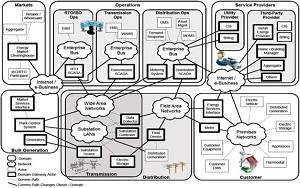Cyber Physical Systems
Cyber Physical Systems
Overview

Industry Need Addressed
Merging computing and communication with physical processes will change the way that we interact with the physical world, leading to such benefits as more efficient systems, safer and more reliable systems, reduced building and operations system costs, and ultimately new, innovative system capabilities. Examples include the US Smart Grid effort (information network overlaid on the ordinary physical electric grid in order to better track electrical usage) and smart manufacturing, intelligent supply chain (tracking limited resources through distributed manufacturing and supply chains), and improved disaster response (improve situational awareness and better optimization of resource distribution).There are currently severe limitations on the ability to connect components from different types of systems, manufacturers and domains.The inability to understand the capabilities of a component well enough to create a new system is very limiting as is the inability for components to easily interact with one another.In the present situation each CPS will need to be custom built; resulting in increased cost, time to market, and reduced functionality.
NIST Approach
NIST/ITL is performing research to investigate fundamental CPS challenges such as service description and discovery, service interaction, and service composition. The testbed will allow NIST experts to test and validate emerging frameworks and architectures for CPS systems, test cps/iot protocols for interoperability, and design and test CPS orchestration and composition techniques. NIST is creating a service based CPS testbed to investigate service discovery, interoperability, composition, and metrics for CPS. NIST is also collaborating with a variety of CPS stakeholders to define new data exchange standards, metrics, and testing methodologies to be used in developing CPS.
Impact
The ability to design and build successful cyber-physical systems will address many national priorities in ways that traditional computer science cannot in areas as diverse as aerospace, automotive, energy, disaster response, healthcare, manufacturing, and city management. Standards, protocols, and test methods that support the discovery, interoperability and composition of components used to build these cyber physical systems will promote innovation, improve economic viability at the same time allowing systems to become more efficient and reduce resource use.

